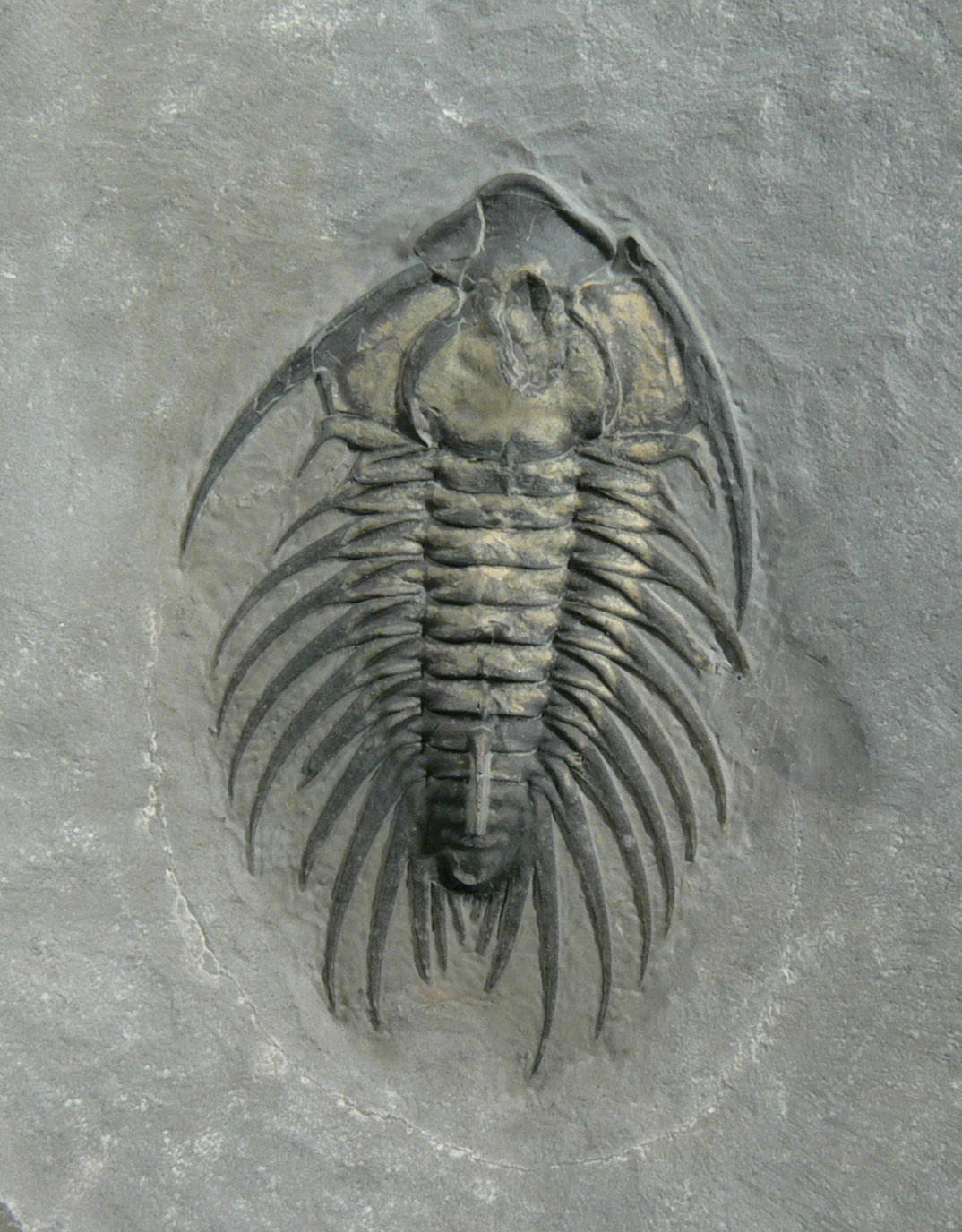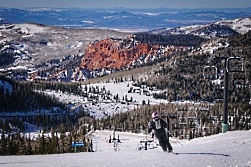
From the Spence Shale
in the Wellsville Mountains
Courtesy & Copyright © 2008 Paul Jamison
Hi, I’m Holly Strand from Stokes Nature Center in beautiful Logan Canyon.
A remarkable period in Earth’s history took place about 525 to 545 million years ago. We know about it, because essentially all the basic body plans of all the major animal phyla suddenly appear in the fossil record. We see brachiopods, trilobites, mollusks, echinoderms and many other hard shell creatures for the first time. We also see the appearance and diversification of different types of soft-bodied creatures. This bio-geologic period is called the “Cambrian Explosion.”
Occurring over the course of 20 million years, it wasn’t exactly an explosion in the sense that the Big Bang was an explosion. But, never before, and never since, has there been such a dramatic emergence of animal diversity and diverse animal phyla. It’s the single most significant evolutionary transition period seen in the fossil record.
To pay homage to this early flowering of complex life forms, you can visit a site near Burgess Pass in British Columbia’s Yoho National Park. The rock here, known as Burgess Shale, contains one of the most diverse and well-preserved fossil records ever found of the Cambrian Period. The dominant fossils are arthropods but others are also found in great abundance such as worms, crinoids, sea cucumbers , and chordates. The Burgess shale contains fossils of soft bodied animals as well as those with hard parts. Soft bodied fossils are extremely rare. When an organism is completely soft, the body usually rots away before it can become fossilized. It is likely that the Burgess animals were buried quickly by a mudslide and their soft parts immediately preserved in oxygen-free conditions.
Another famous site where evidence of the Explosion is clearly seen is in the Yunning Province of China. The Chengjiang Fossils also provide stunning evidence of the Cambrian explosion. The hard and soft body fossils here are even 5 to 10 million years younger than the Burgess Shale.
In all there are about 40 other sites around the world with fossils as well-preserved as the Burgess shale. And three of these sites are in Utah. In Millard County, Wheeler Shale and the overlying Marjum Formation, are exposed throughout the House Range and nearby mountain ranges west of the town of Delta, Utah. Certain layers of the Wheeler Shale contain abundant trilobites and other shelly fossils. The Wheeler Shale and Marjum Formation also contain a diverse collection of soft-bodied fossils, including many of the same taxa found in the famous Burgess Shale.
Other sites with Burgess shale type preservation include the Weeks formation also in the House Range and Spence Shale in the Wellsville Mountains west of Logan.
Utah’s Cambrian fossils can be found in museums around the world. For information on where to see them in Utah, check our website, wildaboututah.org.
Thanks to Paul Jamison and Val Gunther for providing expertise on Utah Cambrian fossils.
And thanks to the Rocky Mountain Power Foundation for supporting the research and development for today’s program.
For Wild About Utah and Stokes Nature Center, I’m Holly Strand.
Credits:
Photo: Courtesy & Copyright © 2008 Paul Jamison
Text: Stokes Nature Center: Holly Strand
How to see Utah Cambrian fossils:
In Utah
University of Utah, College of Mines and Earth Sciences
135 South, 1460 East, Rm. 209, Salt Lake City, Utah 84112
Phone (801) 581-7209; Fax (801) 581-5560
Museum of Natural History in Brigham City (call 435.723.6420 for an appointment)
Thanksgiving Point The North American Museum of Ancient Life https://thanksgivingpoint.org/experience/museum-of-ancient-life/
On the web
University of Kansas Natural History Museum https://www.kumip.ku.edu/cambrianlife/Utah-Online-Fossil-Exhibits&Collections.html
The Virtual Fossil Museum
https://www.fossilmuseum.net/Fossil_Sites/House-Range.htm
University of Utah, College of Mines and Earth Sciences Fossil page
https://www.mines.utah.edu/geo/utahfossil/
Sources & Additional Reading
Hagadorn, J.W., 2002, Burgess Shale-type localities: The global picture, in Bottjer, D.J., et al., eds.,Exceptional Fossil Preservation: A Unique View on the Evolution of Marine Life: Columbia University Press, New York, p. 91-116.
Marshall, Charles R. 2006. Explaining the Cambrian “Explosion” of Animals. Annual Review Earth Planet Science. Vol 34: 355-384,
Interesting Reading:
Paul Jamison ’82 Collects Fossils on behalf of Art and Science, Utah State Magazine, Summer 2006, Vol 12 No.2,
https://www.utahstate.usu.edu/issues/summer06/jamison1.htm



